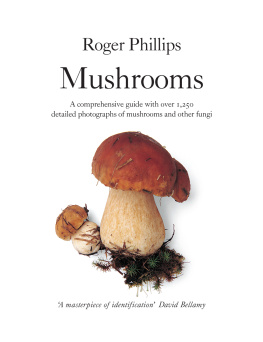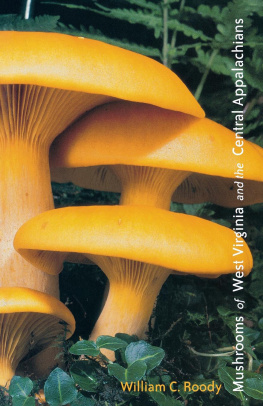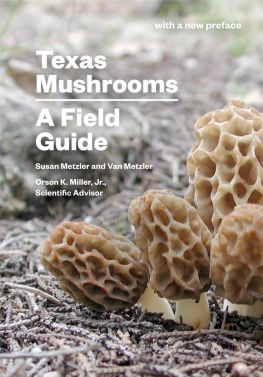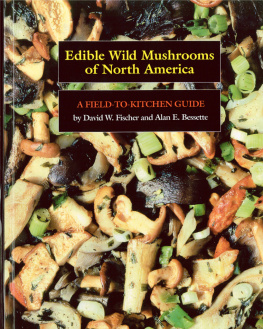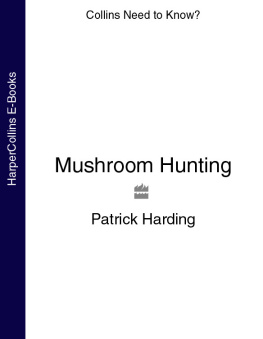APPALACHIAN MUSHROOMS

APPALACHIAN MUSHROOMS
a field guide
Walter E. Sturgeon
OHIO UNIVERSITY PRESS
ATHENS
Ohio University Press, Athens, Ohio 45701
ohioswallow.com
2018 by Ohio University Press
All rights reserved
To obtain permission to quote, reprint, or otherwise reproduce or distribute material from Ohio University Press publications, please contact our rights and permissions department at (740) 593-1154 or (740) 593-4536 (fax).
Printed in the United States of America
Ohio University Press books are printed on acid-free paper 
28 27 26 25 24 23 22 21 20 19 18 5 4 3 2 1
Library of Congress Cataloging-in-Publication Data
Names: Sturgeon, Walt, author.
Title: Appalachian mushrooms : a field guide / Walter E. Sturgeon.
Description: Athens, Ohio : Ohio University Press, [2018] | Includes bibliographical references and index.
Identifiers: LCCN 2018019624| ISBN 9780821423257 (pb : alk. paper) | ISBN 9780821446393 (pdf)
Subjects: LCSH: Mushrooms--Appalachian Mountains--Identification.
Classification: LCC QK605 .S78 2018 | DDC 579.6--dc23
LC record available at https://lccn.loc.gov/2018019624
CONTENTS
Hygrophorus
Hygrocybe, Gliophorus, and Humidicutis
Tricholoma and Melanoleuca
CAUTIONARY NOTE
THIS BOOK IS an introduction and identification guide to many of the wild mushrooms found in Appalachian forests and fields. Included in this book is information about edibility. Every effort has been made to provide the most accurate information available relating to the species discussed here. However, many more species occur in these woodlands than can be included in this book. Wild mushrooms may be poisonous, and some poisonous species may resemble edible varieties discussed here. Even if not generally poisonous, other wild mushrooms may cause allergic or other negative reactions in particular individuals. Before eating a wild mushroom, be absolutely certain that it is not poisonous and that it has been identified correctly.
Neither the author nor Ohio University Press makes any warranty as to the safety of consuming wild mushrooms, and they do not accept responsibility for any health problems, consequences, or symptoms arising from the readers ingestion of them. The reader consumes these mushrooms at his or her own risk. This is also true for individual or allergic reactions to generally accepted edible species. The consumer must exercise caution in consuming wild mushrooms. The author recommends consulting other reference books, websites, and local mushroom club experts before making a decision to eat a mushroom. Furthermore, many edible wild mushroom species are toxic if eaten raw. Edibility information here refers to thoroughly cooked mushrooms.

PREFACE
WILD MUSHROOMS OCCUR in all Appalachian habitats, including soil, moss, humus, living trees, dead wood, and manure. Some wild mushrooms have specialized habitats that include insects, other fungi, nutshells, and aphid exudates. Wild mushrooms exhibit an amazing diversity, and there are many more species than can be included in a field guide.
Mushrooms described in this book have been found in the Appalachian region that includes parts of northern Georgia, South Carolina, North Carolina, eastern Tennessee, Kentucky, Virginia, West Virginia, western Maryland, eastern Ohio, Pennsylvania, New York, and the New England states. There is considerable overlap in range, but some species common in New England, for example, are rare or absent in Georgia.
Many species are undescribed and lack a scientific or common name. The number of species in the Appalachian region is unknown. Estimates of close to three thousand species of macro fungi have been proposed. This book has included all of the popular edible species as well as many of the most common poisonous varieties. Some less common interesting species are found in this text as well.
The mushrooms in this book can be identified using features visible to the naked eye. DNA studies have revealed that in some cases mushrooms that are morphologically identical are actually not the same species. Many familiar mushrooms have incorrectly carried names belonging to their European look-alikes. This has resulted in some species temporarily being technically nameless and lumped together as complexes or groups. None of these groups contain look-alike species that differ significantly in edibility. In the future, the species within these complexes will be sorted out. There will be many new species of morels and chanterelles, for example, but all will remain as popular edibles regardless of what they are called.
The search for wild mushrooms is a scavenger hunt that enables the hunter to enjoy some of his or her quarry as food. The natural beauty of wild mushrooms soon becomes apparent. Delving a bit deeper, we see that it is important and fascinating to learn their ecological importance as recyclers, symbionts, insect killers, and a food source for many insects and animals. The finding and subsequent identification of a mushroom may lead to the discovery of much more than food in the amazing fungi kingdom.

ACKNOWLEDGMENTS
THROUGH THEIR SUPPORT and by generously sharing their knowledge, many people have contributed to the publication of this book. I would like first to acknowledge my father, Thomas H. Sturgeon, who introduced me at an early age to the joys of discovering morels in the old orchard and field mushrooms in the pasture. I would like to extend a special thank you to my wife, Trish, who has been very patient with my spending many hours doing field work and working on this book.
Mycological knowledge has come from many individuals. William Roody has been a constant source of knowledge, field experience, and support over many years. The list of other individuals who have shared their knowledge and given support is long and includes Alan Bessette, Arleen Bessette, Ernst Both, Todd Elliot, Richard Grimm, Emily Johnson, Jay Justice, Gary Lincoff, Renee LeBeuf, Teresa Marrone, Hank Mashburn, Shannon Nix, John Plischke I, and Rod Tulloss.
Two large organizations and their forays have been an inspiration and have provided great learning opportunities. The North American Mycological Association and the Northeast Mycological Federation hold yearly large mushroom forays that offer enjoyable learning experiences. In addition, many local mycological clubs have been instrumental in sharing their local mushroom foray events. These include the Mycological Society of Toronto, the Ohio Mushroom Society, and the West Virginia Mushroom Club.
I would also like to thank Alan Bessette, Arleen Bessette, Todd Elliot, and William Roody for permission to use their photos in this book.
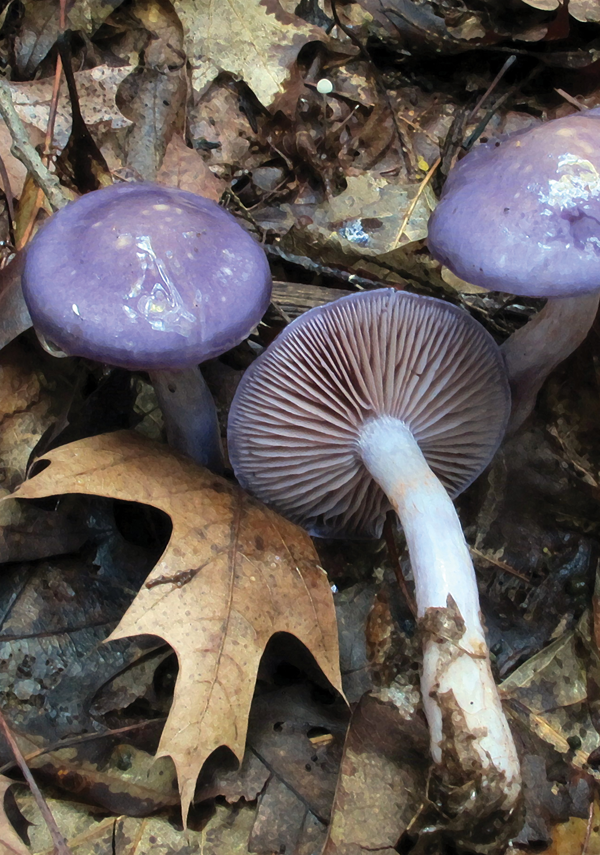
INTRODUCTION
Mushrooms and Macro Fungi
ALL OF THE fleshy and woody fungi fruit bodies in the woods and fields are there for one purpose, reproduction. Microscopic spores are produced somewhere on the fruit body. The part of the organism that produces these reproductive structures is mostly unseen in the substrate as it goes about its lifestyle of procuring nutrients in a saprobic, parasitic, or symbiotic manner. These hidden filaments or strands are known collectively as mycelium. When in the soil or humus, the mycelium can cover large areas. Without chlorophyll and unable to produce its own food, the fungal mycelium uses chemicals to break down its food and then absorbs the nutrients through its cell walls. The mycelium in some mushroom species forms a coating on plant roots, where there is a symbiotic relationship called mycorrhiza. In other species the mycelium is parasitic, aggressively attacking a living plant, insect, or other fungus, killing the host and using it for food. Many macro fungi are saprobes, obtaining their nutrients from dead plant material. They are natures primary recyclers. Many macro fungi can be parasitic at times and saprobic at other times. Some mycorrhizal fungi can also be saprobic at times.
Next page

